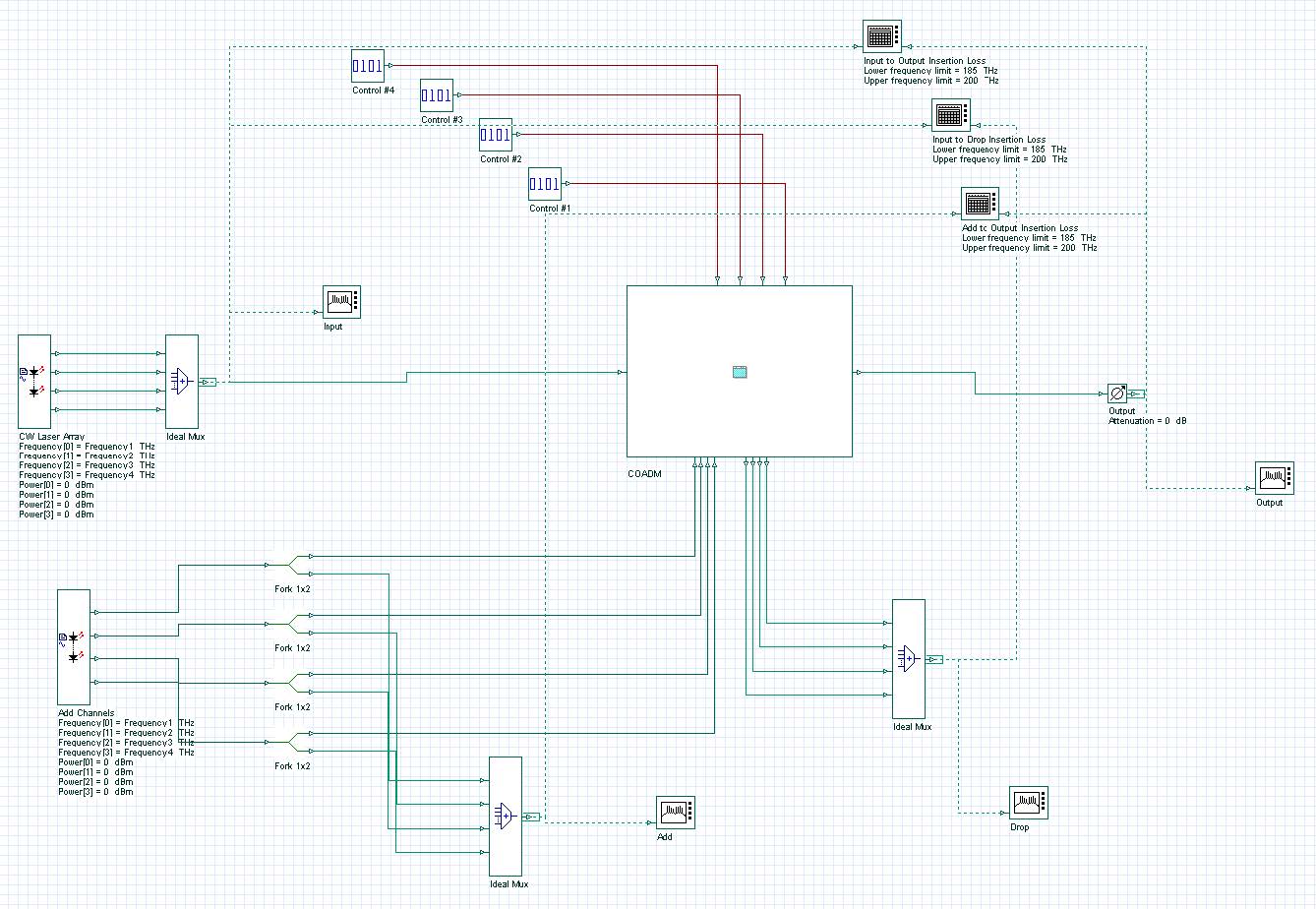Designed to deliver increased functionality and flexibility necessary for today’s advanced optical networks, the COADM demonstrated in project COADM 4×4.osd enables up to 4 channels to be independently added and dropped at will.
The system layout is presented in Figure 1; the input of the COADM is connected to a CW Laser Array, which generates 4 wavelength signals. The second laser array generates the channels connected to the ADD input ports. The input signals will have linewidths of 1 MHz, and the added signals will have linewidths of 10 MHz. This difference was added intentionally, to allow for easy identification of the signal sources when using the OSAs. The control components configure the COADM, by changing the switch positions from cross-state to bar-state.
Figure 1 – COADM layout


